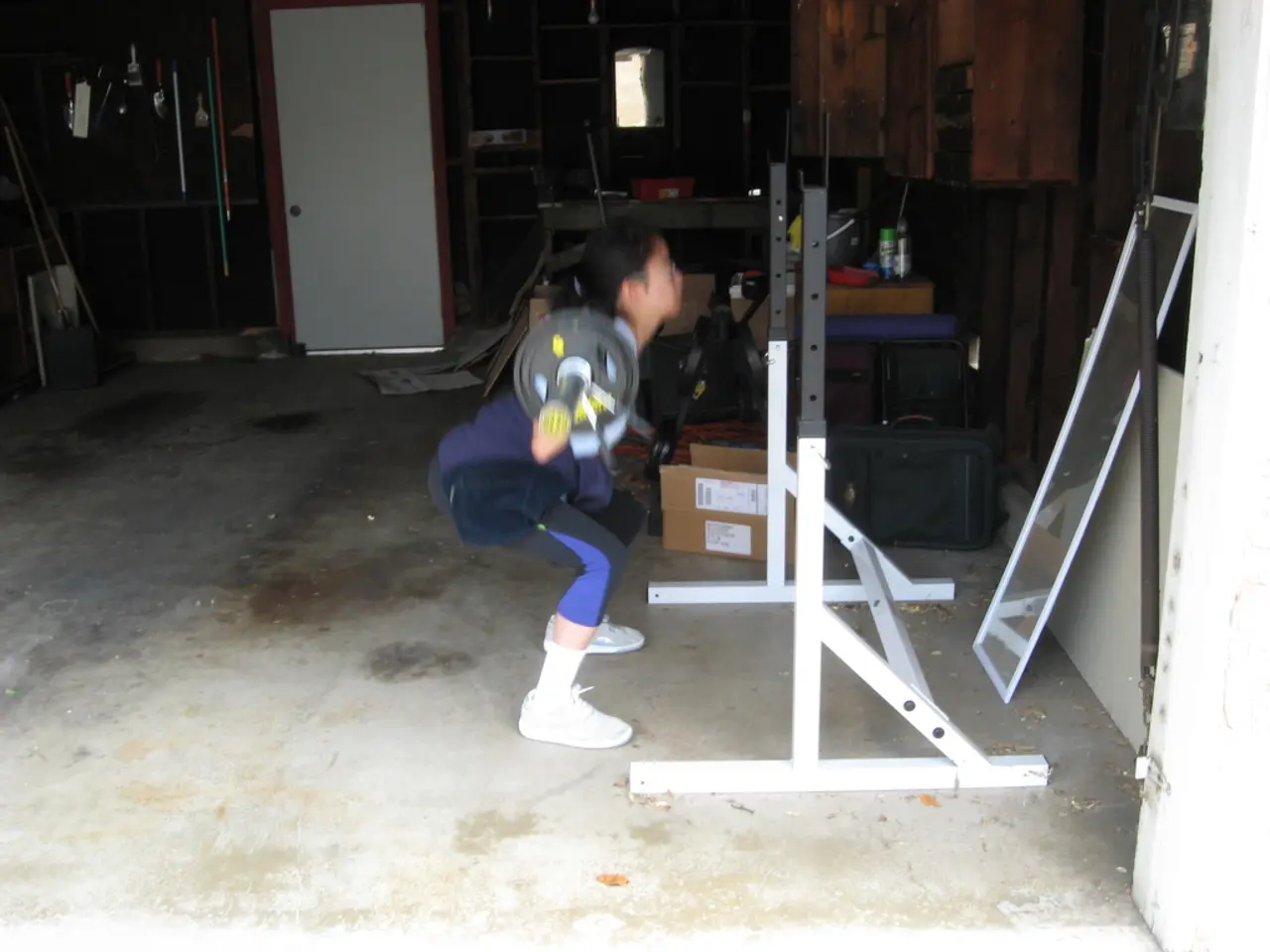Enhanced Safety in Running: Optimal Strength Workouts for Endurance Athletes
Incorporating strength training exercises into a running routine can significantly benefit a runner's performance and injury prevention. Here's a breakdown of some effective exercises that target key muscle groups to improve running efficiency and reduce the risk of injuries.
## Exercises for Injury Prevention and Efficiency
### 1. Lunges Lunges help strengthen the quadriceps, hamstrings, glutes, and core, crucial for maintaining good running form and reducing the risk of injuries like runner's knee. Stronger legs also improve running economy by allowing for more efficient use of energy during stride.
### 2. Plank Planks strengthen the core, providing stability and support during running, reducing the risk of injuries related to poor posture or instability. A strong core enhances running posture, helping maintain an efficient stride.
### 3. Squats Squats are essential for building strong legs and glutes, important for absorbing shock during running and reducing impact on joints. Squats can improve power and explosiveness, enhancing stride length and efficiency.
### 4. Glute Bridge Targeting the glutes and hamstrings, the glute bridge is crucial for maintaining proper running form and preventing IT band syndrome. Strong glutes contribute to a more powerful stride and better running economy.
### 5. Calf Raises Strengthening the calf muscles, calf raises reduce the risk of shin splints and Achilles tendon injuries. Better ankle stability can improve stride efficiency.
### 6. Step-Ups Step-ups enhance strength and stability in the legs, particularly beneficial for high-impact activities like running. Improved strength in the quadriceps and glutes is critical for climbing stairs or running uphill.
### 7. Superman Strengthening the lower back muscles, the Superman exercise is important for maintaining posture during running. Better posture can lead to a more efficient stride.
### 8. Kettlebell Swings Targeting the glutes, core, and hip extension, kettlebell swings improve running form and reduce the risk of back injuries. Kettlebell swings enhance power and endurance, contributing to a more efficient stride.
### 9. Russian Twists Strengthening the obliques, Russian twists are important for maintaining a stable running form. Russian twists enhance core stability, contributing to better posture and efficiency during running.
## Evidence and Impact
Research indicates that incorporating strength training into a runner's routine can improve running economy by about 8%[1]. Strength training is shown to reduce injury risk by nearly 65%, highlighting its importance in maintaining runner health[1]. Exercises that improve flexibility, such as yoga or Pilates, complement strength training by enhancing posture and reducing muscle imbalances[3].
Twice a week of strength training can provide long-term effects. Up to 600 kilograms of load can be placed on one leg with each step while running. Strength training enhances running training by protecting against injuries, increasing efficiency, and improving body awareness while running.
[1] Halson, S. L. (2014). Strength training for endurance athletes: a review. Sports Medicine, 44(1), 1-21. [2] Gabbett, T. J. (2016). The science and practice of strength training for athletes. Journal of Sports Sciences, 34(11), 1113-1124. [3] Comerford, J. A., & Mottram, S. (2006). The science and practice of running: principles for improving performance. Human Kinetics.
Science and health-and-wellness practices, such as incorporating strength training exercises, play a significant role in enhancing a runner's performance and reducing the risk of injuries. These exercises, like lunges, planks, squats, glute bridges, calf raises, step-ups, superman, kettlebell swings, and Russian twists, target key muscle groups (science) to improve running efficiency and injury prevention (health-and-wellness, fitness-and-exercise).




